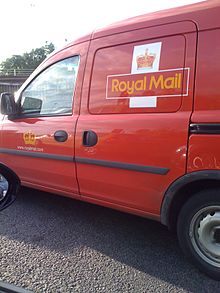
Back Monograma Reial Catalan Monogram brenhinol Welsh Monograma real Spanish Errege-monograma Basque Monogramme royal French Cifra Real Portuguese Cifră Regală Romanian Королівська монограма Ukrainian 皇家密碼 ZH-YUE




In modern heraldry, a royal cypher is a monogram or monogram-like device of a country's reigning sovereign, typically consisting of the initials of the monarch's name and title, sometimes interwoven and often surmounted by a crown.[1] Such a cypher as used by an emperor or empress is called an imperial cypher. In the system used by various Commonwealth realms, the title is abbreviated as 'R' for 'rex' or 'regina' (Latin for "king" and "queen"). Previously, 'I' stood for 'imperator' or 'imperatrix' (Latin for "emperor" and "empress") of the Indian Empire.[2][3]
Royal cyphers appear on some government buildings, impressed upon royal and state documents, and are used by governmental departments. They may also appear on other governmental structures built under a particular ruler. For example, the insignia of "N III" for Napoléon III is seen on some Paris bridges, such as the Pont au Change.
- ^ The Shorter Oxford English Dictionary (Fifth edition; 2002), Volume 1, p. 1820.
- ^ Morley, Vincent. "United Kingdom: Royal Navy". Flags Of The World. Archived from the original on 19 July 2011. Retrieved 30 October 2009.
- ^ Boutell, Charles; Wheeler-Holohan, V. (1931). Boutell's Manual of Heraldry. Detroit: F. Warne and Co. Ltd. p. 244. Retrieved 30 October 2009.